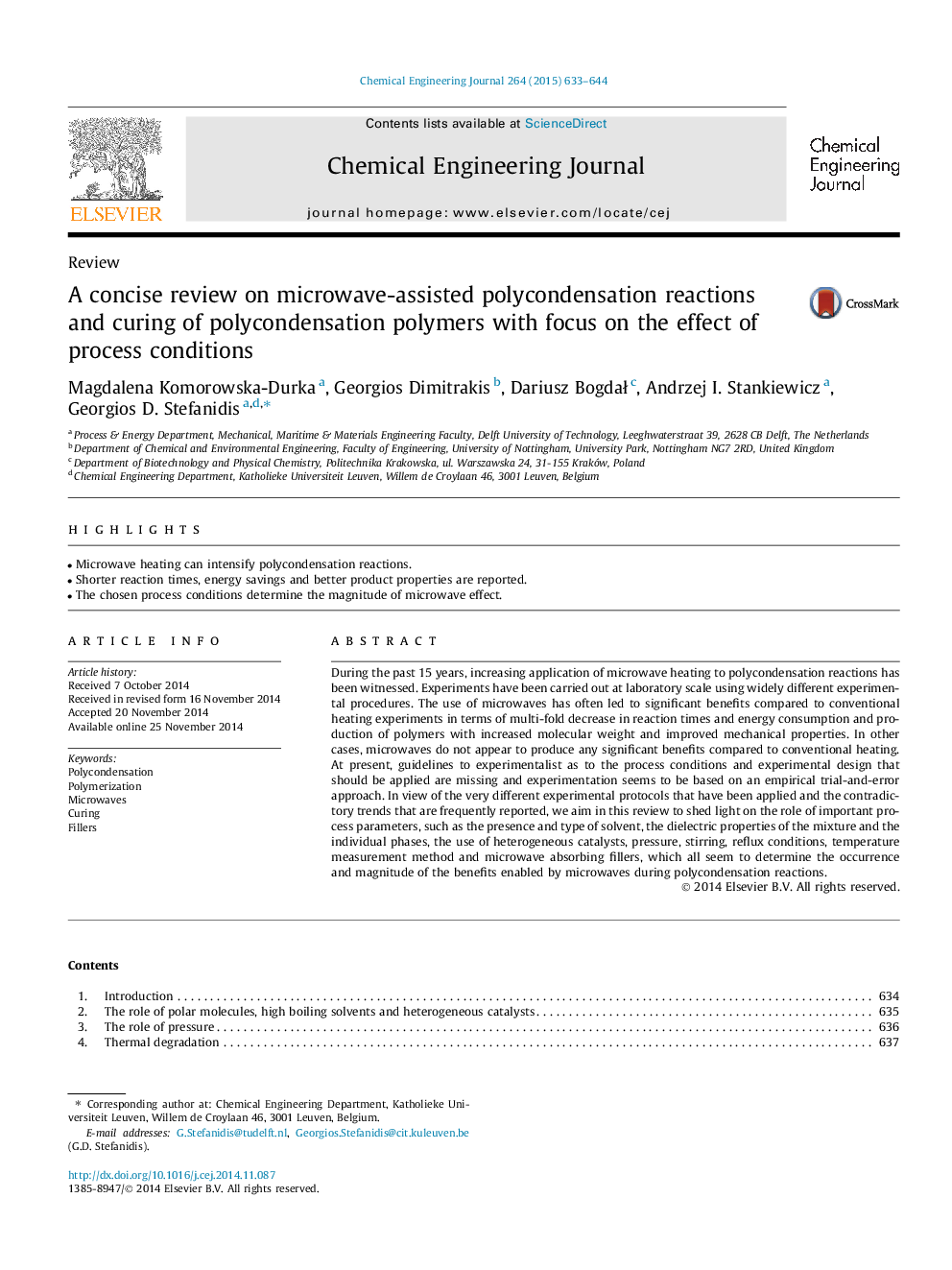| Article ID | Journal | Published Year | Pages | File Type |
|---|---|---|---|---|
| 146820 | Chemical Engineering Journal | 2015 | 12 Pages |
•Microwave heating can intensify polycondensation reactions.•Shorter reaction times, energy savings and better product properties are reported.•The chosen process conditions determine the magnitude of microwave effect.
During the past 15 years, increasing application of microwave heating to polycondensation reactions has been witnessed. Experiments have been carried out at laboratory scale using widely different experimental procedures. The use of microwaves has often led to significant benefits compared to conventional heating experiments in terms of multi-fold decrease in reaction times and energy consumption and production of polymers with increased molecular weight and improved mechanical properties. In other cases, microwaves do not appear to produce any significant benefits compared to conventional heating. At present, guidelines to experimentalist as to the process conditions and experimental design that should be applied are missing and experimentation seems to be based on an empirical trial-and-error approach. In view of the very different experimental protocols that have been applied and the contradictory trends that are frequently reported, we aim in this review to shed light on the role of important process parameters, such as the presence and type of solvent, the dielectric properties of the mixture and the individual phases, the use of heterogeneous catalysts, pressure, stirring, reflux conditions, temperature measurement method and microwave absorbing fillers, which all seem to determine the occurrence and magnitude of the benefits enabled by microwaves during polycondensation reactions.
